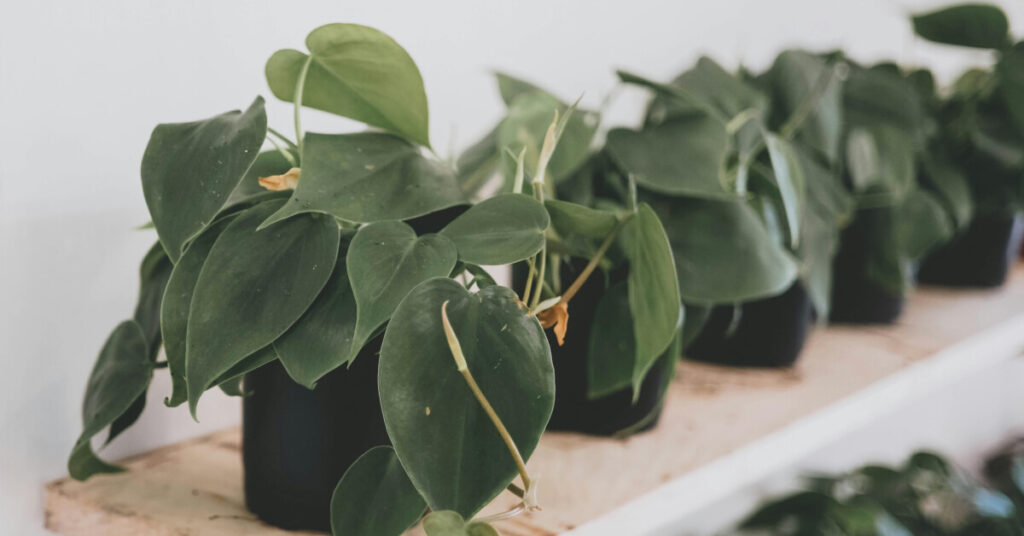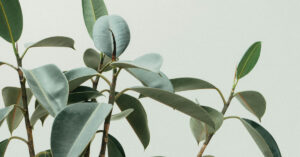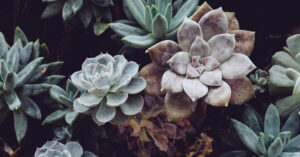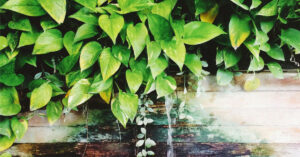Philodendron hederaceum
Few houseplants embody classic indoor greenery quite like the Heartleaf Philodendron. With its iconic, glossy, heart-shaped leaves that gracefully trail or climb, this plant is a beloved staple for both seasoned plant parents and beginners alike. Its adaptable nature, coupled with its lush appearance, makes it an ideal choice for adding a touch of verdant elegance to shelves, hanging baskets, or even trained up a moss pole. The Heartleaf Philodendron is more than just a pretty face; it’s a resilient and rewarding companion that brings a calming, natural presence to any room.
Cultivating Your Philodendron: Light, Water, and Warmth Essentials
Providing the right foundational care for your Heartleaf Philodendron is simple, ensuring its vibrant foliage remains a highlight in your home.
Illumination Needs: The Heartleaf Philodendron is remarkably tolerant regarding light, thriving in medium indirect to low light conditions. While it can survive in lower light, its growth may become leggy, and leaves might be smaller. Bright indirect light is ideal for robust, dense foliage. Avoid direct sunlight, which can scorch its delicate leaves, leading to yellowing or brown spots.
Watering Wisdom: Adopt a moderate watering approach. The key is to allow the top 1-2 inches of the soil to dry out between waterings. When you do water, do so thoroughly until water drains from the bottom of the pot. Ensure the plant is not left sitting in excess water, as this is the primary cause of root rot. During the cooler, darker months, reduce the frequency of watering as the plant’s metabolic rate slows down.
Atmospheric Comfort: Heartleaf Philodendrons appreciate medium humidity. They are generally quite forgiving and can adapt to average household humidity levels. However, if your home is particularly dry, especially during winter with heating systems, a humidity boost can be beneficial. Consider grouping it with other plants, placing it on a pebble tray, or using a humidifier nearby.
Temperature Preferences: These tropical vines are happiest in typical indoor temperatures, ideally between 65-80°F (18-27°C). They are not fond of cold and should be protected from drafts, open windows in winter, or sudden temperature drops below 55°F (13°C), which can cause stress and leaf damage.
Nurturing Your Philodendron: Soil, Feeding, and General Care
Beyond the basic environmental factors, a few simple practices will help your Heartleaf Philodendron flourish, maintaining its lush, trailing beauty.
The Right Foundation: Soil Type: A well-draining, airy potting mix, rich in organic matter, is perfect for the Heartleaf Philodendron. A standard indoor potting mix amended with some perlite, orchid bark, or compost will provide the ideal balance of drainage and moisture retention. Avoid heavy, compacted soils that can lead to waterlogging.
Feeding for Flourish: During the active growing season (spring and summer), fertilize your Heartleaf Philodendron monthly with a balanced liquid fertilizer. It’s best to dilute the fertilizer to half strength to prevent nutrient burn. In the fall and winter, when the plant’s growth naturally slows, reduce or cease fertilizing entirely.
Tending to Health: The Heartleaf Philodendron is generally low-maintenance. Wipe its glossy leaves occasionally with a damp cloth to remove dust and enhance its natural sheen, promoting better light absorption. Pruning is beneficial to maintain shape, encourage bushier growth, and manage its trailing length. You can snip off leggy stems right above a node.
Popular Heartleaf Philodendron Varieties
While the classic Philodendron hederaceum with its deep green leaves is most common, several captivating cultivars offer subtle variations in color and texture, perfect for adding diversity to your collection:
- ‘Brasil’: This popular cultivar features variegated leaves with striking splashes of lime green and yellow, adding a vibrant twist to the classic heart shape.
- ‘Lemon Lime’: As its name suggests, this variety boasts bright, almost neon-yellowish-green leaves, brightening up any space with its cheerful hue.
- ‘Micans’: Distinctive for its velvety, dark green leaves with reddish undersides, ‘Micans’ offers a unique texture and slightly darker, moodier aesthetic.
- ‘Silver Stripe’: This lesser-known but beautiful variety features a central silvery-green stripe down the middle of its green leaves, adding a subtle touch of elegance.
Propagating Your Philodendron: Easy to Multiply
One of the most rewarding aspects of owning a Heartleaf Philodendron is how incredibly easy it is to propagate. You can readily create new plants from existing ones:
- Take Cuttings: Using clean pruning shears or scissors, snip off a section of stem about 4-6 inches long that has at least 2-3 leaves and a few nodes (the bumps where leaves and roots emerge).
- Remove Lower Leaves: Remove any leaves that would be submerged in water to prevent rot.
- Water Propagation: Place the cutting in a glass or jar of water, ensuring at least one node is submerged. Change the water every few days to keep it fresh. Roots typically begin to form within a few weeks.
- Soil Propagation: Alternatively, you can plant the cutting directly into moist, well-draining potting mix. Keep the soil consistently damp until roots establish.
- Potting Up: Once the roots are a few inches long (in water) or the cutting shows new leaf growth (in soil), you can pot it into its own container.
Toxicity
It’s important to be aware that Heartleaf Philodendrons are toxic if ingested due to the presence of calcium oxalate crystals. These can cause irritation to the mouth, throat, and digestive tract. Keep this plant out of reach of curious pets and small children.
The Enduring Appeal of the Heartleaf Philodendron
The Heartleaf Philodendron remains a timeless choice for indoor gardeners due to its straightforward care, rapid growth, and versatile aesthetic. Whether cascading from a shelf or gracefully climbing, its rich green foliage and charming heart-shaped leaves bring a calming and natural elegance to any space. It’s a testament to how effortlessly beauty can integrate into our daily lives, making it a truly cherished member of the indoor plant family.




